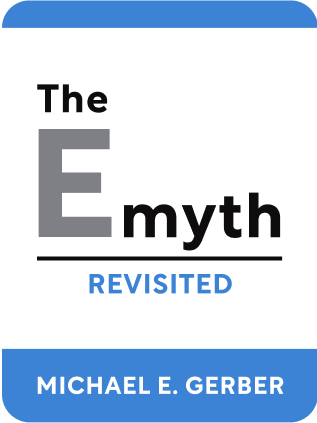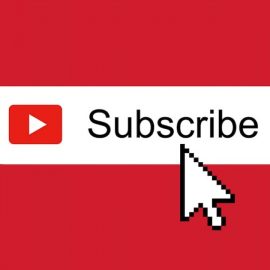

This article is an excerpt from the Shortform book guide to "The E-Myth Revisited" by Michael E. Gerber. Shortform has the world's best summaries and analyses of books you should be reading.
Like this article? Sign up for a free trial here .
What are the components of a successful business development process? How can such a process help your business grow?
In The E-Myth Revisited, Michael E. Gerber lays out the seven components of a business development process. You probably know that you need a business objective and a marketing plan, but you might not be aware of everything you need to set up your business for growth.
Read more to learn the elements of the business development process.
The 7 Components of the Business Development Process
To organize or reorganize your business into a model or prototype that could be replicated, you need a business development process.
It has seven components:
- Personal objective
- Business objective
- Organizational plan
- Management plan
- Personnel plan
- Marketing plan
- Systems plan
1) Personal Objective
Your life and your business are separate things. But your business can and should play an important role in your life, and its purpose should dovetail with your personal goals.
Before determining your business’s role in your life, determine your own primary goal by considering what you most value, what kind of life you want, and who you want to be. You need to know where you’re going in life in order for your business to contribute to that goal.
Other questions to help determine your life goal include:
- what you want your life to be like on a daily basis
- how you want to relate to others
- what you want others to think of you
- what you’d like to be doing in both the short term and longer term
- how you want to grow and what you’d like to learn
- how much you need to earn to achieve your goals
Knowing your life goal can help you shape your business goals and provide the energy and purpose to drive your business.
2) Business Objective
Your business can be part of achieving your life goal. Your business objective is a clear statement of what you want your business to look like and what you want it to accomplish, and it’s an indispensable component of the business development process.
A vision of what you want your business to be includes financial goals; clarity on what you propose to sell and specifically to whom; and considerations such as your growth timeline and standards for how you’ll do business.
Financial Goals
In picturing what your business will look like when fully realized, decide how big it will be in terms of gross revenue. Also, estimate pre- and after-tax profits. Does the amount match what you need to achieve your life goal? How much do you want to be able to ultimately sell the business for, and when do you want to sell it?
If the business you’re developing can’t provide the return you want, you need to change it, walk away, or come up with a better opportunity.
Other relevant questions include:
- “Does the business address a need for a large enough group of customers to be sustainable? Based on demographic data, who is my best customer?”
- “Beyond a specific commodity, what am I selling to this group of customers? What intangible need am I meeting?” For example, Revlon’s commodity is cosmetics, but it also sells hope.
Once you have a clear picture of what you want your fully realized business to look like, you need to create an organizational plan.
3) Organizational Plan
Small business owners often think they don’t need an organization chart because they’re starting with only a few people. But a chart reflects not just where you are at present, but how you want the business to develop organizationally.
Many businesses make the mistake of organizing around people rather than around the necessary functions. For example, a naive business might merely think about hiring a specific number of people, equally distributing tasks between those people.
If you organize around people, your operating ability will depend on specific employees’ strengths, weaknesses, moods, and attitudes. When employees quit, you’ll be left in the lurch. Responsibilities will be unclear and you won’t be able to hold anyone accountable for getting the necessary things done.
Instead, create an organization plan reflecting what your organization will look like when the business is fully evolved. This is an essential piece of the business development process.
- List every position/function that will be needed, from chief operating officer to dishwasher, and note the lines of authority.
- Do each job yourself to determine their respective duties, results, and standards. Then write an operations manual for each position.
- Write a position contract for each position. This isn’t a job description, but rather summarizes results the person in each position must deliver, the standards for evaluating the results, and the work he or she will be accountable for performing.
- Don’t advertise to fill a position until you’ve taken the above steps.
Your organization chart evolves from your objectives and establishes the logic and structure of your business, as well as how positions/functions relate to each other and to the whole.
4) Management Plan
Your management plan is your operating philosophy: it reflects why and how you do what you do. Your management system is also the way you and your employees communicate your operating philosophy to your customers through your actions.
The author’s experience at a favorite hotel in the Pacific Northwest illustrates how a management strategy and system work. The hotel’s management plan or philosophy was to provide harried guests with a place of peace and order, where they could relax and feel taken care of.
The company had a system for going above and beyond expectations to consistently serve the needs (even unconscious ones) of each customer. The check-in staff and the staff at the adjoining restaurant used subtle questions to determine each guest’s preferences for wine, coffee, and newspaper brand. Automatic lighting inside and outside adjusted to the time of day and darkness. Staff anticipated the needs of guests — for instance, starting a fire in each room’s fireplace on chilly evenings and setting a timer to start the coffee pot in the morning.
To ensure that a plethora of little things were done consistently for each guest each time he visited, staff followed numerous checklists and supervisors did spot checks. Guests’ preferences were noted and addressed on subsequent visits as well. New employees were taught the company’s management philosophy and were walked through an operations manual for their particular job. The management system was effective in applying the business’s philosophy because of these and other automated processes.
5) Personnel Plan
To get things done and done right consistently, create an environment in your business where doing what needs to be done is important and gratifying to the people tasked to do it. Create processes, as the hotel in the previous example did, that make doing what you want a habit.
In addition, make sure people understand the purpose of the work you’re asking them to do and make sure the steps and standards are clear. Go through the company’s objectives, standards, strategy, philosophy, and operations manual. Also, exemplify the behavior you want to see from your employees. A personnel plan is a crucial component of the business development process.
6) Marketing Plan
Your marketing plan begins and ends with your customer. In deciding this strategy, forget what you want — your dreams and goals for the business — and focus on what the customer wants, which you need to discover and cater to better than anyone else.
To do this, you need to know two things in detail:
- Who your prime customers are — their demographics or facts such as age, gender, income, and marital status.
- Why they buy — their psychographics, defined as the classification of people based on psychological criteria such as aspirations, attitudes, habits, tastes, and preferences.
By knowing these things, you can scientifically build your business model or prototype to satisfy your customer’s needs (which may be subconscious). To learn about your target customers, you can buy market data, or you can learn from existing customers by asking them about their needs and interests via surveys and questionnaires that provide a reward (something free or discounted) in return for participation.
Many business owners make marketing decisions on how to attract customers without objective information, depending instead on instincts and opinions, which are likely inaccurate or incomplete. However, with a demographic and psychographic customer profile, you have a far better chance of reaching and satisfying your customers. This is why a marketing plan is a necessary piece of the business development process.
7) Systems Plan
Every element of your business is part of a system, which is a set of interrelated procedures, methods, and routines designed to accomplish a purpose. You have multiple systems — for instance, billing or inventory control — that affect each other.
In a business, there are three general types of systems:
- Hard or inanimate — for instance, your computer system or your office design.
- Soft — for instance, systems involving people and ideas. Your verbal and written communications are soft systems. Your recruiting script is a soft system, as are your advertisements.
- Information — for instance, sales activity reports or cash flow forecasts. These provide data about the interaction of hard and soft systems.
Your business model or prototype must integrate your systems so they strengthen each other.
- For instance, you might have a selling system (soft) — a series of steps to be taken by salespeople to make a sale, including making an appointment with the client, presenting a needs analysis, and following up with a presentation on your company’s solutions to the customer’s needs.
- The selling system would be supported by your information system, which buttresses your salesperson’s presentation with data relevant to the customer and helps you evaluate employees with data tracking how the salesperson is performing. Sales data provided by your information system also helps you identify new sales opportunities or weaknesses you need to address.
- Your hard systems also help your salespeople do their jobs — for instance, tools such as a laptop computer or tablet help them make compelling presentations to customers.
Your business systems work together to present a single, consistent message — the idea or purpose driving your business.
Implementation of a business development process is crucial to the success of your business, and now you have a place to start.

———End of Preview———
Like what you just read? Read the rest of the world's best book summary and analysis of Michael E. Gerber's "The E-Myth Revisited" at Shortform .
Here's what you'll find in our full The E-Myth Revisited summary :
- Why so many new business owners fail
- Why how you produce something is more important than what you produce
- The 7 components that you as an owner must work through






